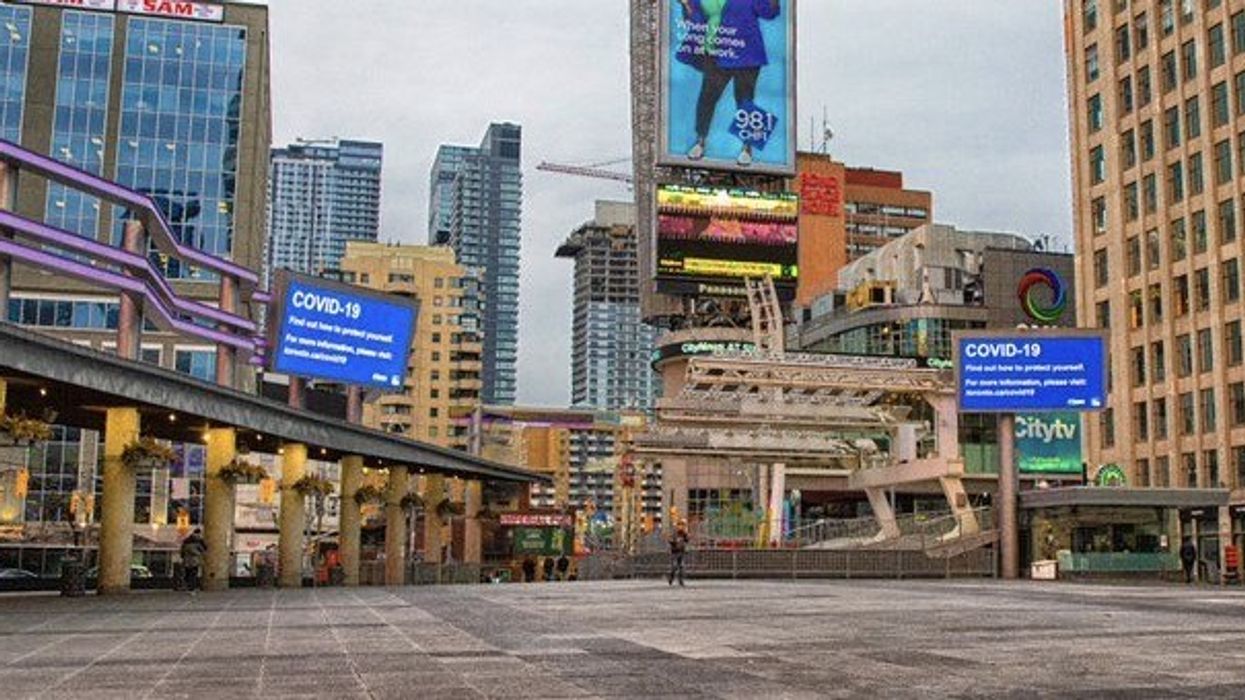Yonge-Dundas Square has been embraced by Torontonians as a lively entertainment hub in the centre of the city, and functions to a large extent the way planners intended it to. But something’s missing.
As you scan around the Square and get to the northeast corner, you see an interruption in the horizon; a building much shorter than those that surround it that leaves a noticeable gap exactly where, arguably, the visual climax of the Square should be.
It’s worth knowing a bit about what happened—or didn’t happen—from someone who was at the centre of the Yonge-Dundas redevelopment, Ron Soskolne.
In the early 1970s, the intersection of Yonge and Dundas was an active community of small shops, taverns and arcades that, over time, morphed into a haunt for drug dealers and transients.
Revitalized by the new Eaton Centre that opened in 1977, then-city planner Ron Soskolne thought the area would become a “vital” hot spot organically—but it didn’t happen. By the time the seedy shops and discount stores moved into the neighbourhood, Soskolne had left his city job for a career in real estate development.
Fast forward 20 years and Soskolne was back, this time with a bigger vision for the area. In the ensuing years, he'd worked on large-scale development projects. He was responsible for Queen’s Quay on Toronto’s Harbourfront, and he went on to work on projects around the world, including in Asia, and he created London’s Canary Wharf. Soskolne was also instrumental in New York’s Times Square redevelopment.
Now, he was eager to return to Toronto to create “a vibrant attraction at the centre of the city.”
By then, the City of Toronto’s Official Plan set the tone for the downtown core—it wanted a vibrant, competitive, safe and livable downtown, and at its heart was the area surrounding Yonge and Dundas.
In 1996, the Yonge Street Regeneration Project was created in a partnership between the Yonge Street Business and Residents Association and the City. The centerpiece of the project was a public space at the southeast corner of Yonge and Dundas streets. Soskolne was brought on as a consultant, and this time his vision for the area was realized.
In 2003, Yonge-Dundas Square officially opened to the public to rave reviews. Today the area’s vibrant energy is alive with music, theatre and community events that appeal to tourists as well. Often compared to New York City’s Times Square, the intersection is one of Canada’s busiest.
But the story of the Yonge-Dundas Square is still not complete, as a key piece is missing.
In 1998, the City of Toronto approved the expropriation of several buildings in the area, which were subsequently demolished to make way for the Square. At the time, it was Soskolne who spoke on behalf of the City at the OMB hearings into the land expropriation and also to the redevelopment of the properties surrounding the Square.
“It was all part of the program,” Soskolne said. “Properties were expropriated and were developed, and the Square got built. But one building remains unchanged, despite the development around it. The missing piece; the city-owned property at Dundas and Victoria, which is currently occupied by Public Health.”
Today, the site remains unchanged, as does Soskolne's commitment to this urban node.
The former Planner continues to offer solutions, for what he (and others) see as Yonge-Dundas Square's "missing link": Whether with or without Public Health remaining on site, Soskolne advocates for tearing down the building, and rebuilding it, as already presented in the plan to the OMB, to include revenue-producing assets for the city. For example, he suggests adding a retail component and a restaurant.
Soskolne said that developing this final piece of the project would enhance the Square and fulfill the original plan.
“So far though, the city doesn’t seem interested,” he said.
Is it time to revisit the original idea and develop this property? The City’s official plan calls for it, the building is in need of repair, and Soskolne does have a plan.
Perhaps, at minimum, its time to take another look at Yonge-Dundas Square to see if it's all it could be.
Save
Save
Save
Save
Save
Save
Save
Save





















